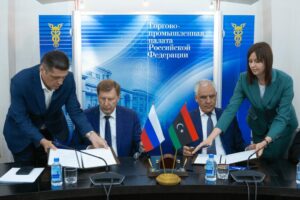SEI played a leading role in a partnership to develop a Regional Bioeconomy Strategy for East Africa, the first of its kind for the continent. The Strategy will catalyze policies for sustainable, bio-based and inclusive economic growth in the region.
In the face of rapid population growth, policymakers in Eastern Africa are under pressure to grow economies, create new jobs and provide better opportunities for young people and women. At the same time, it is crucial to protect the environment and ecosystems, and ensure resilience to climate change impacts and disease.
The bioeconomy will play a key role in overcoming these challenges. In Eastern Africa, as throughout the world, countries and businesses are making the bioeconomy a priority, and asking how to transform bio-based sectors to support sustainable economic growth and development. To achieve a transformation of this kind, policymakers in the region need to work in partnership and set out a strategic direction. This is what the BiSEA project (Developing an Innovation Led Bioeconomy Strategy for Eastern Africa), funded by Sida’s BioInnovate Africa Programme, sets out to achieve.
“The formulation of a bioeconomy strategy for East Africa is an important stepping-stone in the development of a bioeconomy in the region, transforming and adding value to primary production in Eastern Africa not only in agriculture, but also in sectors like aquaculture, forestry, health and industry.”
– Dr Julius Ecuru, BioInnovate Africa Programme Manager, Icipe, Kenya
Mapping a path to sustainable and equitable regional growth
SEI guided the development of the Regional Strategy with input and direction from a drafting group made up of members representing the seven partner countries. SEI also coordinated the effort to collect and assess regional bioeconomy data for the baseline reports that underpinned the process.
The overall objective of the strategy is to achieve “sustainable economic growth and job creation, making use of the region’s bioresources to develop products in the areas of food and nutrition, health, bio-based industrial products and bioenergy, while contributing to an improved environment and climate change mitigation.”
The strategy is built around four thematic areas, with specific objectives to:
- introduce new bio-based technologies and solutions to strengthen food and feed production, ensuring food security
- develop a bio-based healthcare sector contributing towards a healthy population with improved well-being, addressing regional priorities and building on Indigenous knowledge and practices
- develop industries that stimulate sustainable economic growth and that add value to underutilized renewable resources in the region
- increase the production and use of sustainable bioenergy and develop a range of bioenergy products for both household and industrial purposes.
These objectives directly contribute several Sustainable Development Goals, including poverty alleviation (SDG 1), improved food security and nutrition (SDGs 2 and 3), good health and well-being (SDG 3), inclusive and sustainable economic growth (SDG 8), affordable energy for all (SDG 11), combating climate change and its impacts (SDG 13) and functional ecosystems, a clean environment and maintained biodiversity (SDG 15).
“The East African Regional Bioeconomy Strategy will catalyze the development of [Ethiopia’s] national bioeconomy strategy and subsequent policy development for sustainable, biobased and inclusive economic growth and job creation in the region.”
– Dr Kassahun Tesfaye, Director General of the Ethiopian Biotechnology Institute, Ministry of Innovation and Technology (Ethiopia)
What enabled success?
Building strategic collaboration between seven governments and partners from civil society and the private sector presents challenges, not least in terms of mediating between different interests, transparency, focus and buy-in. By drawing on its long-standing regional engagement to help convene relevant actors and compile and generate data, SEI supported a successful, science-based drafting process that meaningfully reflected different local realities. National-level consultation ensured that each partner country could feel ownership of the outcome, while regional consultation took in contributions from government and policy bodies, industrial and commercial actors, practitioners, farmers, civil society and academia.
Momentum through dialogue
Open discussion is also key to a successful regional approach, and alongside the effort to develop the Regional Bioeconomy Strategy, SEI co-organized the first Eastern Africa Bioeconomy Conference. More than 200 participants attended the online conference, including ministers from the region and representatives of UNECA and the African Union.
“The first Eastern Africa Bioeconomy Conference and the EAC and its project to develop a Regional Bioeconomy Strategy is pioneering bioeconomy development in Africa,” said Professor Joachim von Braun, Co-Chair of the International Advisory Council on Global Bioeconomy.
Source : SEI















